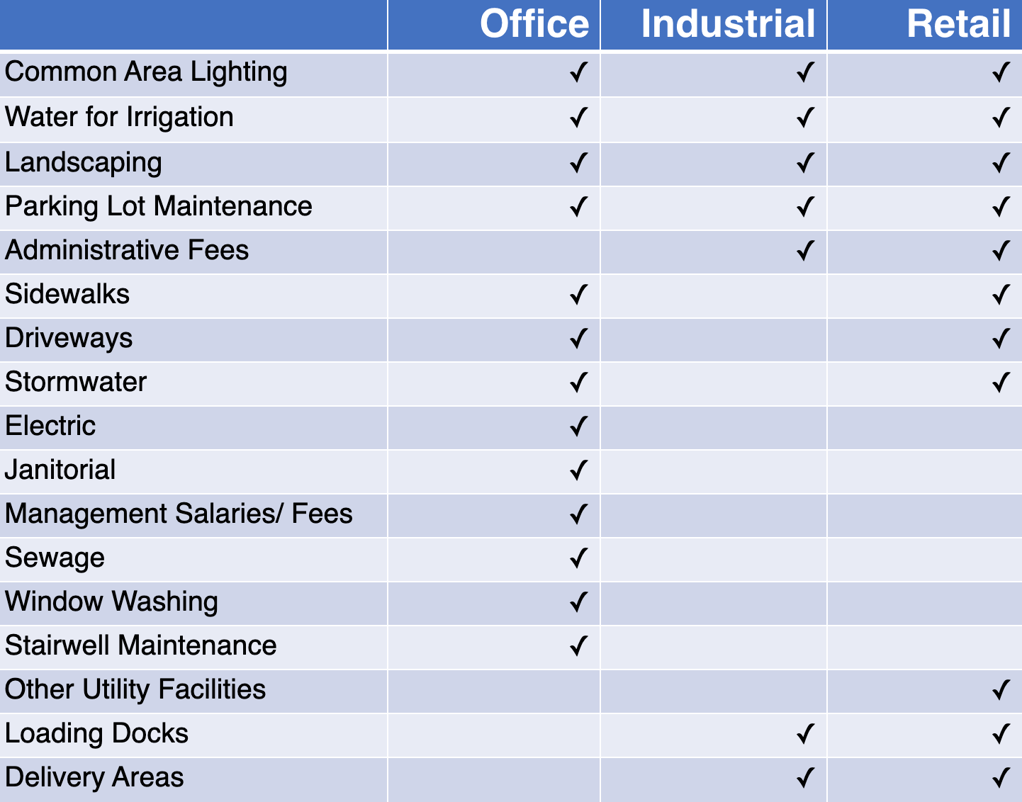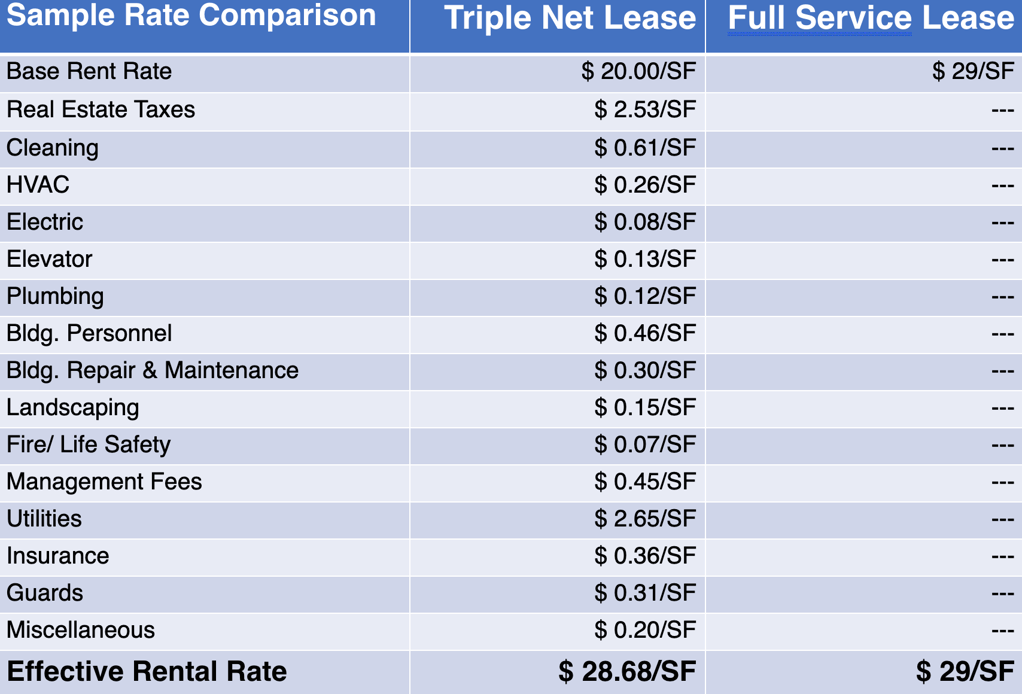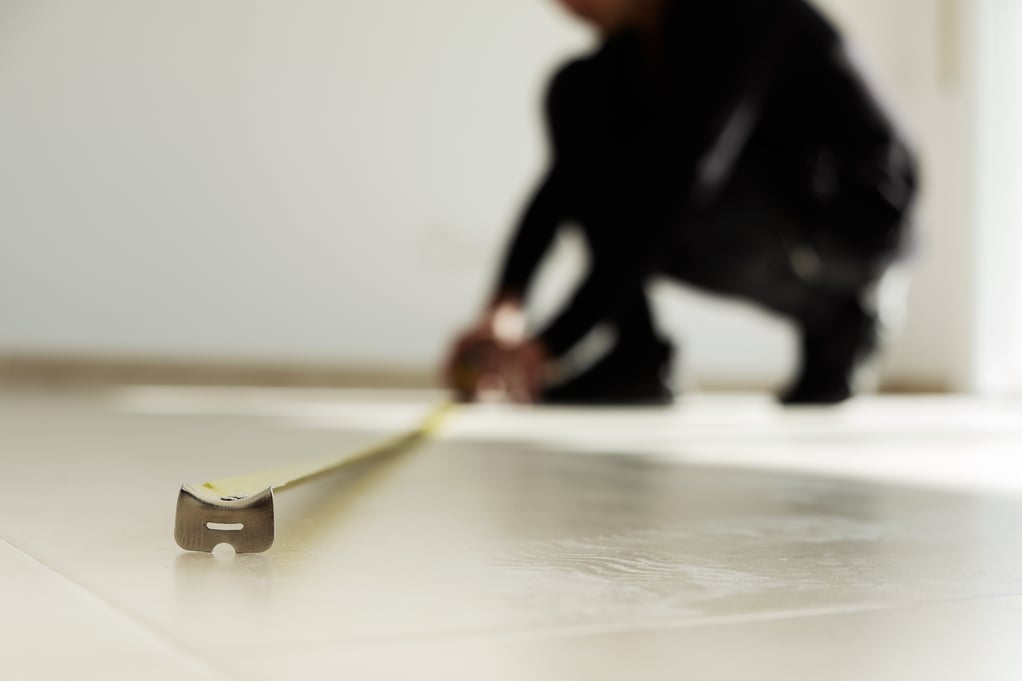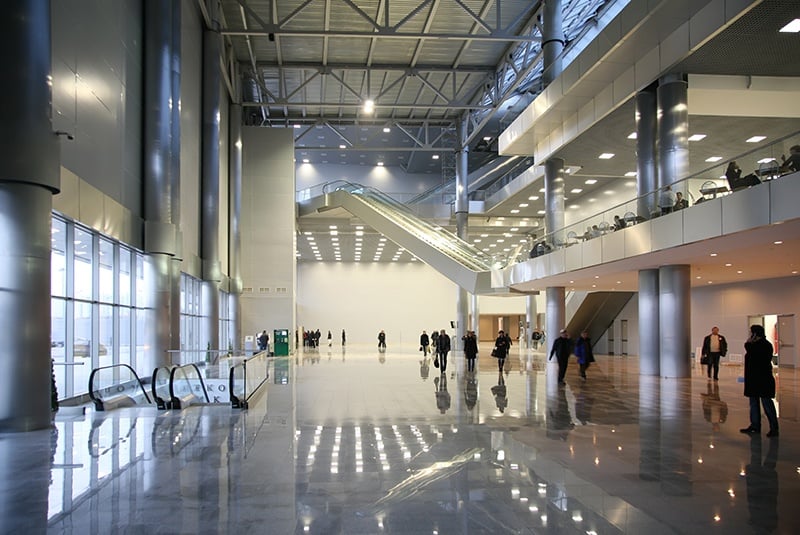In this article, you'll learn:
- What CAM charges cover, including typical maintenance costs
- Differences between CAM charges and other operating expenses in your lease
- How CAM fees are handled in full-service vs. triple net leases
- How to calculate and verify your share of CAM charges
- Why working with a Tenant Rep is crucial for negotiating fair CAM terms
Operating expenses (OpEx) are one of the most significant costs of a commercial lease. In fact, your operating costs will usually amount to one-third of your commercial property's total cost of occupancy. Because of this, they are one of the most critical aspects to get right as the charges will likely be heavily scrutinized.
Within the OpEx are Common Area Maintenance (CAM) charges.
Mistakes with your Common Area Maintenance will cost you, so you should be well-versed in understanding CAM charges, how they appear in your lease, and what you can do to ensure they benefit your budget.
To prepare you with all the information you need to know about common area maintenance costs and how it will be presented in your lease terms, we have included three decades of commercial real estate industry experience in this article. So read on if you want to learn:
What You Need to Know About CAM (What are CAM Charges?)
What You can do About CAM ChargesWhat To Know About Common Area Maintenance
Regardless of what type of commercial property you occupy, you will probably pay common area maintenance charges (CAM). Anything that you share with the other tenants – or that you don't control within the walls of your suite – is a common area.
For example, while your office is your private area, the hallways and shared bathrooms on your floor are common areas. CAM charges allow the landlord to pass along to you, your proportionate share of the cost to maintain these common areas. This is known as the tenant's pro rata share.
We all love clean bathrooms and well-maintained facilities, so it’s a reasonable expense, if you understand what it is you are paying for and that there are reasonable limits to such expenses.
What’s Included in Common Area Maintenance Costs?
What qualifies as your CAM will depend on several factors, however, it is typical to see the following outlined as charges in your lease.
- Parking lot maintenance
- Lawncare and landscaping
- Snow removal
- Sidewalks
- Hallways
- Bathrooms
- Elevators
- Property management fees
- Common Area Utilities (ie: parking lot lighting)
Your Internet connection is probably billed directly to you, so it's private, but if the entire building shares the same water connection, that water connection is also part of the common areas.
Similarly, all tenants must pay a share of the upkeep as maintenance. Maintenance fees are the cost of running the common areas of the commercial property. It includes everything from the power bill to light the hallways to the cost of sweeping the parking lot. Usually, the landlord sets an annual budget for the maintenance and bills you every month, with a final true-up payment after the beginning of the next year.
Depending on the type of commercial space you lease, what is included in CAM may differ. Note the table below to understand what will appear as CAM for retail, office, or industrial spaces.

How Does CAM Differ from Operating Expenses?
The operating expenses are the cost of operating the building. They include:
- Utilities
- Repairs
- Insurance
- Property tax
- Management fees
- Among other things
Common Area Maintenance is similar but only applies to the cost of running shared features. CAMs also exclude property taxes and insurance. This means that it's common to hear your reimbursements described as "CAM, Tax and Insurance," which is another way of saying that you'll pay your share of the building's entire operating expenses.
How CAM will Appear in Your Rent
Common area maintenance fees will depend on the type of lease you signed. Note that while the CAM charges will be packaged differently, they likely will not have a net difference in price.
Full Service or Gross Leases
Typically, office spaces will be presented with full service or a “Gross” leases. These names denote the same thing: an agreement where the tenant pays a base rent rate that includes all additional charges. Typically, this includes the “Base Year” CAM charges. The landlord includes expenditures like operating expenses in a lump sum and then deals with vendors directly.
Under a Full-service Lease, landlords charge a set amount every month. They then use your full-service rent payment to pay the building's operating expenses, their mortgage (if they have one), and then, themselves or their investors. After the first year, the “Base Year,” the lease will typically have a provision for the landlord to pass through to the tenant any increases in the Op-Ex of the building.
Triple Net Leases
With a triple net lease, things are done a bit differently.
Triple nets are usually associated with warehouse, retail, or build-to-suit properties where one tenant inhabits the entire premises. Triple net leases are the other most common lease type.
With a triple net lease, the tenant pays the property owner a lower initial base rent because they pay for any other expenses directly.
The potential benefit of this is that the tenant has direct control over these expenses. The bad part of this is that the tenant now has another thing to manage. Some tenants are very set up for this, i.e.: you have multiple warehouse or retail locations, some are not.

In a lease where you pay CAM charges and other operating expenses, your rent gets separated from the cost of running the building. Since you are responsible for CAM expenses, you take on the risk of the building's operating costs.
If common area maintenance charges go up, you pay more, and if they go down, you pay less. At the same time, the owner gets a set return on their invested capital in the form of your rent.
In both cases, you’re basically paying the same CAM fees, its just packaged differently.
How Is CAM Determined?
Owners calculate the total common area maintenance charge by adding up all the charges delineated in your lease as part and parcel of the CAM expenses for the building, their property taxes, and insurance.
Some leases also let them add a CAM admin fee, which is an extra collection on top of the CAM charges for the landlord to administer these charges.
To determine how much you pay for CAM, property owners find your pro-rata share of the building. While it's important to read your lease carefully to understand exactly how these get calculated, the process generally relies on the amount of space you occupy or the tenant's proportionate share.

Knowing how much space you really have vs how much common area there is within the building is key to not getting ripped off. These are just some of the gotchas landlords can cleverly use to make you feel like you got a good deal, when in reality, you didn’t.
- Measuring Your Space – the BOMA Standard:
What standard (if any) was used to determine how to measure your space. For example, there is the BOMA Standard, ironically from the Building Owners and Management Association (BOMA) which is actually pretty fair. Funny enough, a lot of landlords, especially in the big city, don’t like it. Go figure.
When you add your usable square footage to your share of the building's common areas, you get your rentable square footage. While your tenant representative can help you verify your square footage, if you want to calculate it yourself, you need four pieces of information:
- What standard (if any) was used to determine how to measure your space. For example, there is the BOMA Standard, ironically from the Building Owners and Management Association (BOMA) which is actually pretty fair. Funny enough, a lot of landlords, especially in the big city, don’t like it. Go figure.
- The size of your space (in usable square feet)
- The total usable square footage of the building
- The total common area space of the building
Once you have that information, divide the size of your space by the building's total usable square footage. That will give you a percentage, which represents your pro-rata share of the building's total usable area. Then, multiply the common area space by your pro-rata share. Add that product to your usable square footage to find your total rentable square feet.
If you occupy 20 percent of the building's usable space, then this means that your pro-rata share is 20 percent. You will have to pay 20 percent of the building's total CAM charges.
If this is a sizable office lease, say 20k square feet or more and you have come to the conclusion that figure this all out yourself maybe more than what you really bargained for, well, you’re probably right.
You really should have the assistance of an experienced Tenant Rep and possibly the help of an architect to determine your real usable square footage, the building’s real total square footage and your real proportionate share of the common areas. I probably would not bark up that tree if I were a 2k office tenant in a 200k office building. Just saying.
It's hard to predict what CAMs will be in advance. For that reason, owners usually create a CAM budget at the beginning of the year. Then, they divide it by 12 and charge you your share every month. At the end of the year, they compare what they charge you to the actual costs and either send you a check for the difference if you overpaid or send you a bill if you underpaid. Then, it begins again for the next year.
This is known as a reconciliation.
Capping the CAM
A great Tenant Rep will help you cap the CAM charges to assure they are within the realm of reason. This is one of the key things she or he should be negotiating for you. This provision keeps an upper limit on CAM charges, thus protecting the your budget from excessive charges or unpredictable costs. Caps can be either compounded or cumulative and are typically expressed as a percentage of the total charge.
Inversely, landlords may want to include a “floor” on CAM charges. This is part of the negotiating.It creates a lower or base limit on the annual CAM costs tenants pay.
How Can I Make Sure That My CAM Rate is Fair?
The time to act and to protect yourself is before you sign the lease. That’s why you should engage a Tenant Rep who can:
- Research other buildings in the area to see how all of their CAM costs line up to this proposed site. If a building has high rent and higher CAMs than others, it is a red flag.
- Ask for a CAM history. If a building has a long history of flat or declining CAM costs, you might be in for a surprise increase as deferred maintenance comes due. Conversely, if it consistently goes up by a reasonable amount, it could indicate responsible management.
- Negotiate the terms of your CAM. Depending on your market -- and your tenant rep can be a guide -- you might be able to negotiate capped increases, change the square footage on which it is calculated, or take other measures to reduce your expenses.
Don’t Leave Your CAM to chance: Work with a Tenant Rep
As with any other lease terms, CAM clauses and even the actual CAM costs are often shrouded in nuance and industry jargon. It can be difficult to know if your landlord is offering you a good deal unless you’ve been around the block a few times. So, don’t leave anything to chance. Work with an industry expert who only has a fiduciary to get you the best deal, a Tenant Rep.
True Tenant Reps only represent tenants. This means they can improve your CRE portfolio or individual leases through unbiased and dedicated service. At iOptimize Realty we are Tenant Reps with over three decades of experience ensuring the CAM costs of our corporate tenants benefit their budget. Not only this, but we can walk you through any lease term, renegotiate existing properties to possibly reduce rent, improve your spatial utilization, or help launch a relocation. Consider us your ad-hoc, special forces real estate team.
Common Area Maintenance is only the tip of the iceberg when it comes to commercial leases. Subscribe to our blog to stay on top of the latest trends in the CRE space, learn surefire tried and true techniques to optimizing your portfolio, and improve your bottom line.








